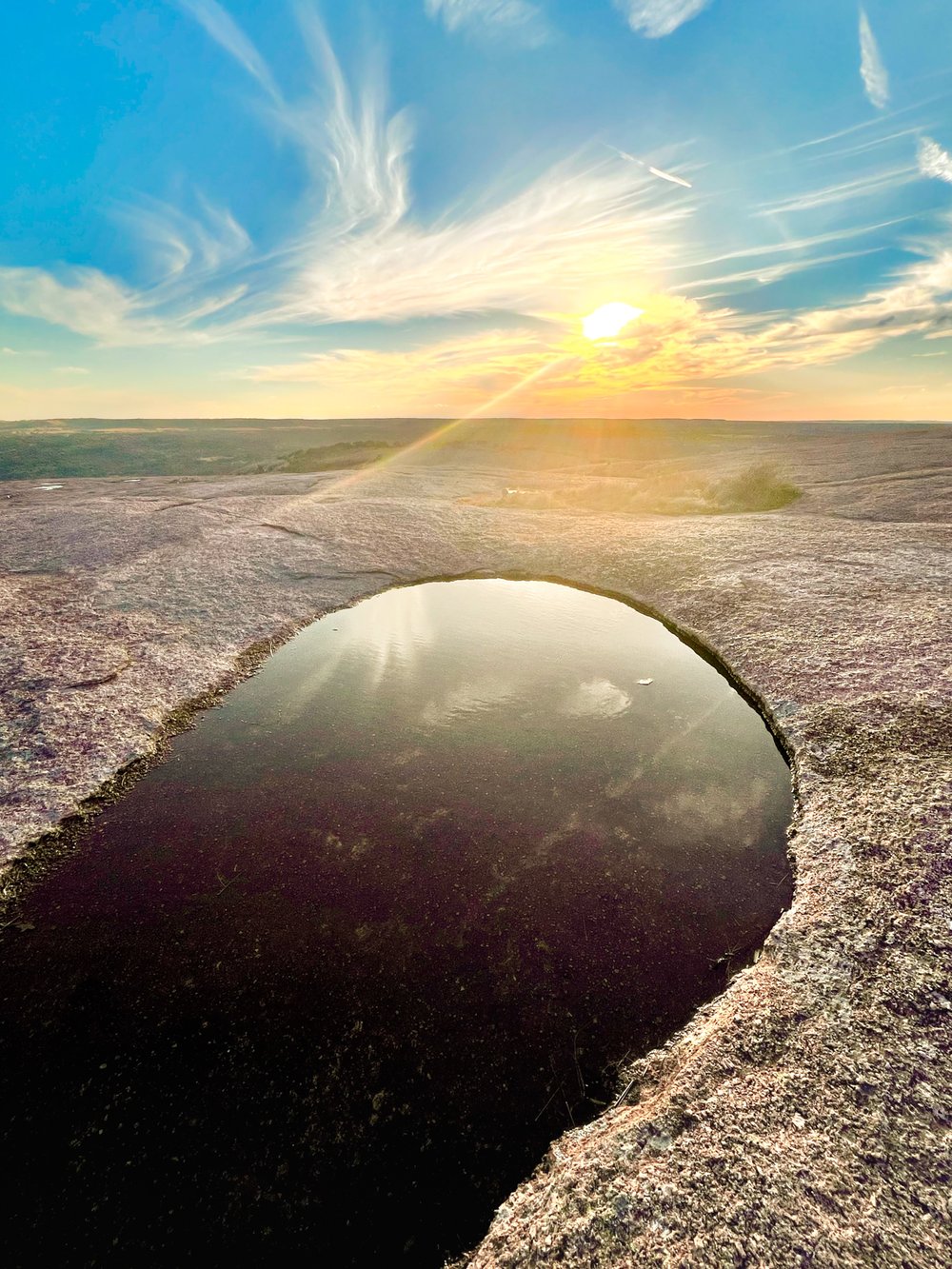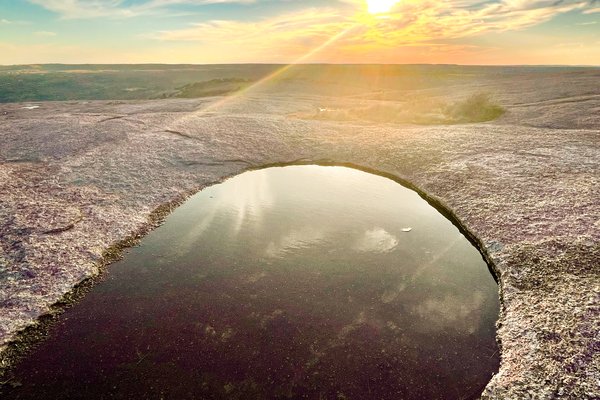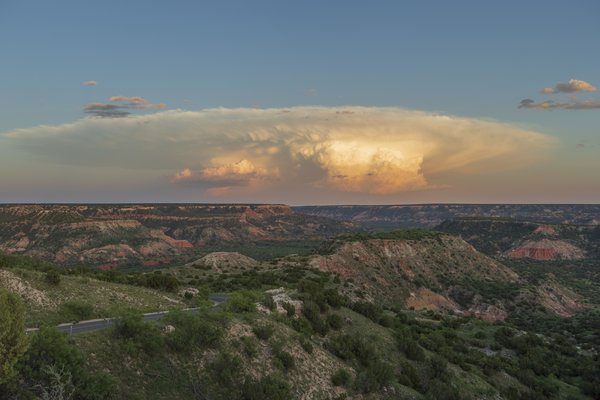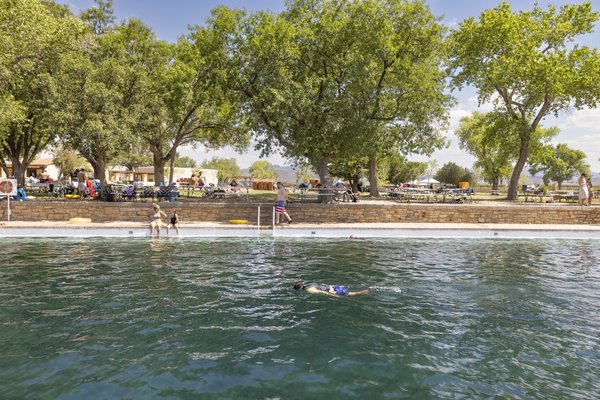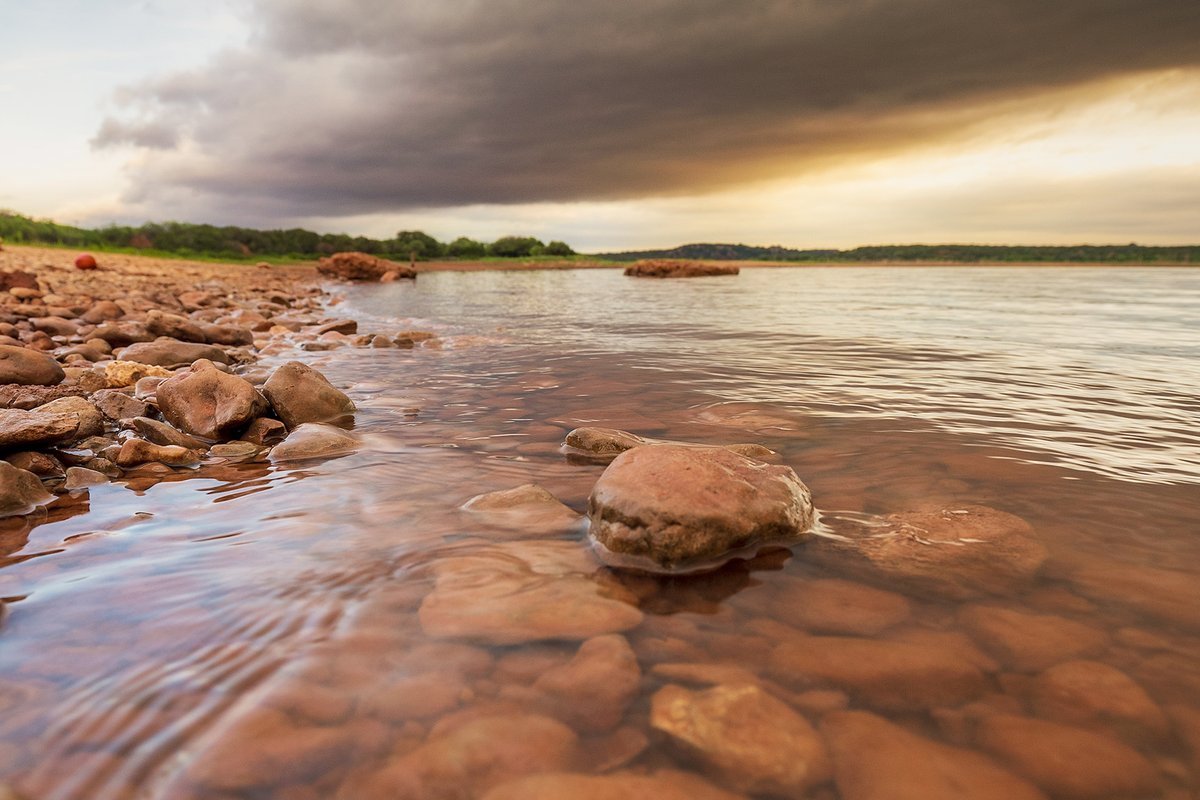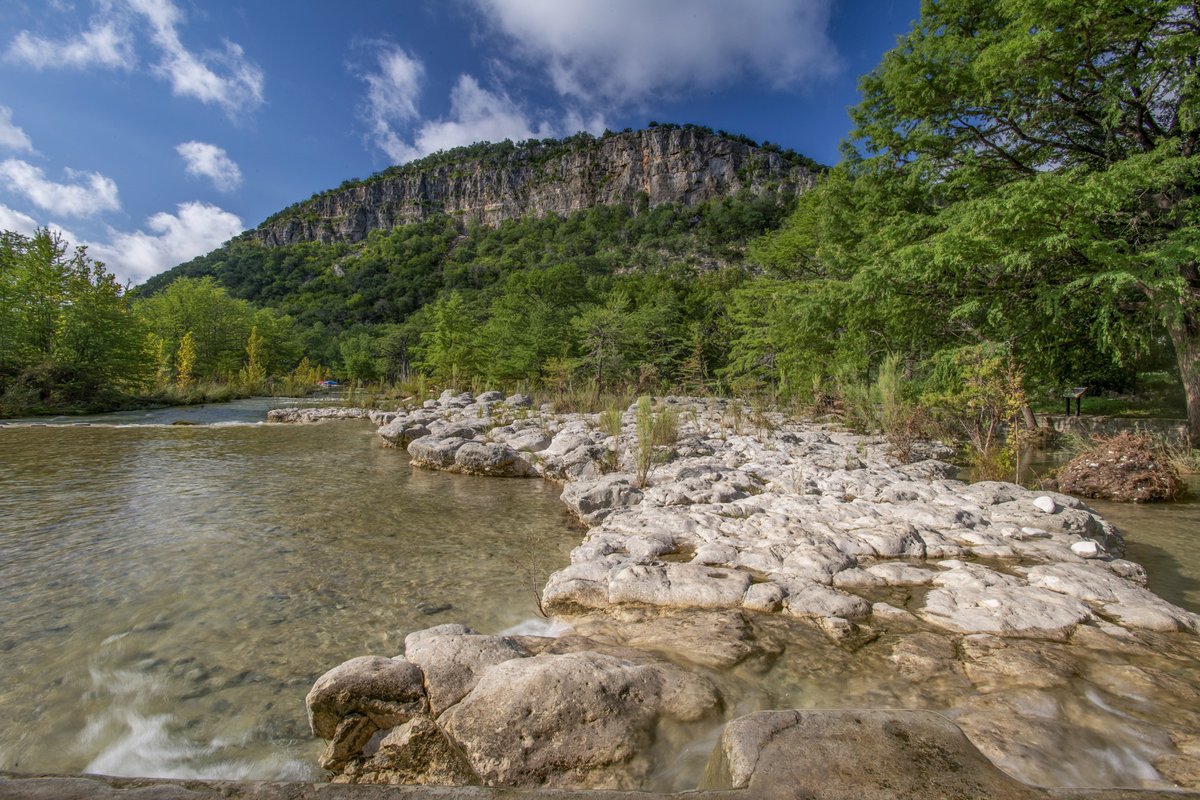Small rainwater-filled pools atop Enchanted Rock are the closest thing in Texas to a real-life fairyland.
These vernal pools, or spring pools, support a host of fascinating life, including tiny invertebrates called fairy shrimp. In spring, when the pools fill with water, they often appear as flourishing green islands of life in a sea of granite.
Scientists call the pools “gnammas,” an aboriginal Australian word for a naturally formed rock hole and the rainwater that collects there. According to Native Americans, the sometimes footprint-shaped depressions at Enchanted Rock are tracks left by the spirit of a man who sacrificed his daughter; wracked with guilt, he paces the summit even after his death.
A vernal pool begins as a depression in the rock, caused by erosion from wind and water. Rain, leaves and soils collect in the hole, creating an ideal habitat for algae. And where there’s algae, there’s often zooplankton, which feed on the tiny microplants. The pools dry out in the heat of summer, and the algae and plankton die or go dormant, creating fertile organic matter where plants can grow.
Across the dome of Enchanted Rock, the many pools are constantly in different stages of ecosystem progression. For example, some might just have algae, while others with more soil may exhibit a healthy crop of water plants such as the bright-green rock quillwort (see photo on facing page). At their most advanced phase, the pools become tiny bluestem prairies, sometimes dotted with cactus and oaks.
“There are gnammas or vernal pools found all over the planet; they’re everywhere,” says Francisco Pérez, a professor emeritus of the University of Texas’ geography department.
The reason Texas’ pools are special, he says, is the habitat they provide for regional species. The rock quillwort, for example, is found almost nowhere else.
“It’s an endangered species,” Pérez says. “Once it’s gone, it’s gone.”
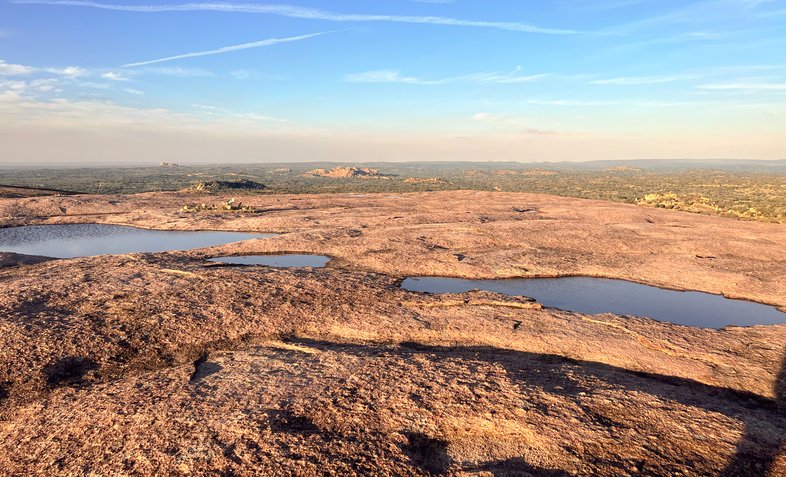
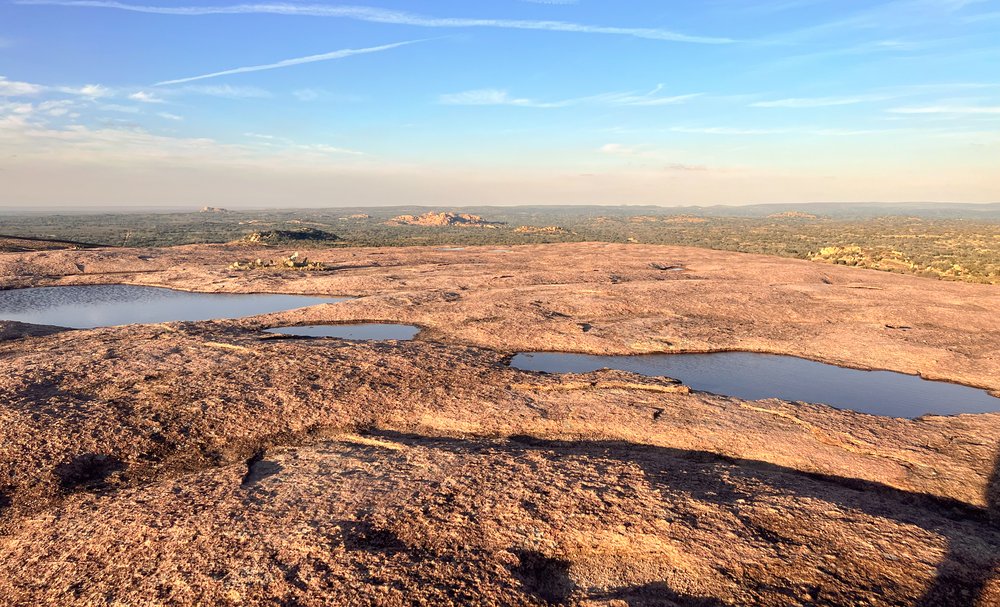
The pools are quite fragile — a single storm can wash away hundreds of years of ecosystem progression.
“We ask people to get as close as possible to the pools without touching them,” says Addison Preston, interpretive ranger at Enchanted Rock. “We want you to observe them from afar because those ecosystems are so delicate.”
When filled with water, the pools support a host of wiggly inhabitants: tadpoles, mosquito larvae and the aforementioned fairy shrimp.
What are shrimp doing 1,825 feet above sea level on a granite dome in Central Texas? Scientists still aren’t sure. The shrimp may have been carried there after being eaten by birds, or they could have evolved alongside Enchanted Rock, which, along with most of Texas, was once covered by a shallow prehistoric sea.
However they got there, the tiny shrimp are perfectly suited for the seasonal lifestyle of the vernal pools. When they sense their pool drying up as the year progresses, the shrimp lay their eggs. The adult shrimp die when the pool is completely dry, and the eggs remain in a dormant state until the pools fill once again with rainwater.
“You could take it really deep — the fact that by summer the pools are dried out and completely desiccated, yet year after year each spring we still see fairy shrimp, we still see our bluestem prairies striving and progressing through succession,” Preston says. “Sometimes a storm comes through and tears them apart and they have to start over, but they just keep going. They have been doing that for hundreds of millions of years.”
It’s a beautiful metaphor for the renewal of nature — and one of the many aspects of the fairy pools that feels like pure magic.
